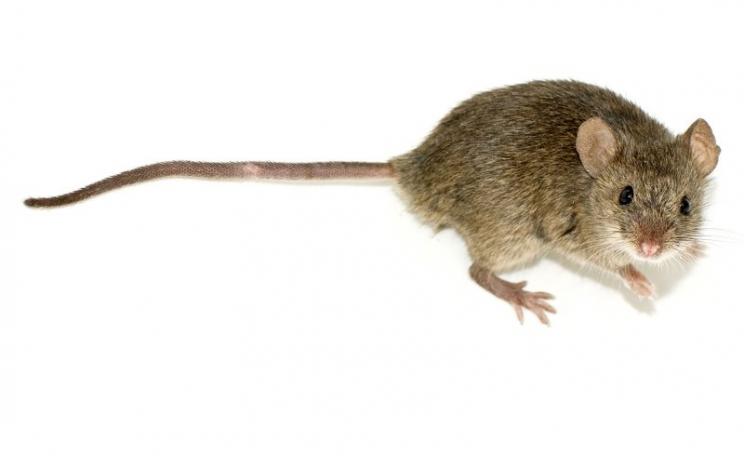Those with total cholesterol values well above what experts consider safe are at lowest risk for dying from heart disease and other causes.
"Nourishment", Ross Hume Hall wrote in the Introduction to Food for Nought in 1976, "has undergone a startling transformation ...
"A highly individual system of growing and marketing food has been transformed into a gigantic, highly integrated service system in which the object is not to nourish or even to feed, but to force an ever-increasing consumption of fabricated products ...
"Man can never be more than what he eats, and one would expect that a phenomenon with such profound effects on health and wellbeing as a radically changed system of supplying nourishment would be thoroughly documented and assessed by the scientific community.
"Such is not the case ... Failure to monitor and to appreciate the results of rapidly moving technology produces a brutal effect ... "
Brutal indeed. Industrial tampering with the food supply has been linked to all sorts of diseases of the mind and body, not to mention addictions, suicides and homicides. Yet, the underlying causes remain obscure.
Why? Perhaps its because the ability to assess the effects of technological innovation often lags behind the capacity to innovate. Fortunately, scientists have finally developed tools that allow them to measure the biochemical effects of problematic elements in the food supply with great precision.
Linoleic acid - the elephant in the room
Even so, ideas as to what constitutes proper nourishment continue to be hotly debated. Moreover, since most of the debate centers on saturated fats and added sugars, an important component in the food supply, omega-6 linoleic acid (LA), is rarely mentioned.
We all realize that food must contain vitamins, minerals, and essential fats and proteins in roughly the right proportions and in adequate measure; enough to meet requirements for all life processes including reproduction and cell replacement.
Perhaps more important, food must not contain excessive amounts of toxins so as not to overwhelm the the body's ability to excrete them or control their action - neither high quality food nor supplementation can undo toxicity.
Lastly, the mix of fats, proteins, and carbohydrates must be appropriate. It's the 'One man's meat (or bread) is another man's poison' principle.
It is widely believed that the cholesterol-lowering effect of LA reduces the risk for heart attack. Only a handful of scientists dare assert that our modernized, industrialized food supply contains excessive LA.
Proponents of high LA intake say that "A large body of literature suggests that higher intakes of omega-6 (or n-6) polyunsaturated fatty acids (PUFAs) reduce risk for coronary heart disease (CHD)."
Those with total cholesterol values well above what experts consider safe are at lowest risk for dying from heart disease and other causes.
Critics note that LA does so by shifting the cause of death to something other than heart attack. In truth, plotting total cholesterol against mortality yields a U-shaped curve. Ironically, those with total cholesterol values well above what experts consider safe are at lowest risk for dying from heart disease and other causes.
The untested hypothesis
Scientists have yet to test what would happen if LA intakes were lowered. As the report on the 2010 meeting of the International Society for the Study of Fatty Acids and Lipids (ISSFAL) concludes:
"The debate concluded with agreement by all that we need a randomized controlled trial to compare the effect of low and high intakes of LA. The trial should have typical US intakes of omega-3 PUFAs, with 7.5% energy from LA (the current US intake) in one group and 2.0% LA (historical intake) in the other. It would study cardiac endpoints and continue for about 5 years."
No such trial has been initiated.
The Lyon Diet Heart Study was discussed in the ISSFAL debate. In other mention of the Lyon Study, scientists noted that it was "The only long-term trial that reduced n-6 LA intake to resemble a traditional Mediterranean diet" and that it "reduced CHD events and mortality by 70%."
They concluded, "Although this does not prove that LA intake has adverse consequences, it clearly indicates that high LA intake is not necessary for profound CHD risk reduction."
Evidence of LA health damage ignored
A disturbing aspect of the 'healthy fat' debate is the fact that proponents of high LA intake ignore other lines of evidence suggesting high LA intake is harmful. For example, feed researchers learned that when corn oil or soybean oil was used as a butterfat replacer in veal calf rations, the animals generally got sick and died.
Feed researchers eventually recognized the need to include an antioxidant (vitamin E) in veal calf rations containing oils rich in LA (from Introduction to a 1973 article, 'Growth, plasma lipids, and fatty acid composition of veal calves fed polyunsaturated fats'):
"Adams et al (1959), in papers describing biochemical and physiological effects of rearing calves on highly unsaturated vegetable fat, observed poor gains, ill health and high mortality ... All the calves in our study, whether fed milk containing high or normal amounts of polyunsaturated fatty acids, received supplemental vitamin E.
"The presence of this vitamin E during these early growth stages may be the explanation for the very satisfactory growth and weight gains during the milk feeding period, which contrasts with the growth deficiencies and health problems encountered by Adams et al."
Why were feed researchers anxious to supplement skim milk rations with polyunsaturated oils rather than lard or beef tallow which they knew, from previous experience, worked fine? They wrote:
"The possibility exists that food products containing high levels of polyunsaturated fatty acids may be useful in dietary prevention and alleviation of atherosclerosis. If clinicians prove an associative effect of dietary fatty acid saturation with incidence of cardiovascular disease, it will become desirable for dairy and beef producers to develop methods of increasing the degree of polyunsaturation in milk and meat fat."
Ironically, the feed researchers gave no thought to protecting humans with vitamin E.
The omega-6 - obesity connection
There's also a connection between LA intake and obesity. In a 2013 interview entitled 'More 'Vegetable' Oil? MORE Heart Deaths' NIH scientist Joseph Hibbeln said,
"Normally those high fat diets used for mice in studies are composed of high linoleic acid, found in soybean oil. When we deleted that one single molecule, the Omega 6 fatty acid, we were able to obliterate the ability of a 60% high fat diet to induce obesity in the mice ...
"And we did it also in diets that were 35% of calories from fat, and also diets that were 12% of calories from fat. We were able to induce obesity in low fat diets, in the mice, by changing the bioactive properties of the fat, not just that it was high fat and more calories."
In a 2003 Orlando Sentinel article entitled 'Hunger Confronts Bigger Issue', global obesity expert Barry Popkin repeatedly mentioned the global increase in the use of vegetable oils for food preparation:
"If you go back to those same villages or slum areas today ... their diet includes a lot of vegetable oil ... In China ... Rice and flour intake is down, and animal-source foods such as pork and poultry and fish are way up, and the steepest increase is in the use of edible vegetable oils for cooking ...
"People are eating more diverse and tasty meals; in fact, edible oil is a most-important ingredient in enhancing the texture and taste of dishes ... The edible-oil increase is found throughout Asia and Africa and the Middle East as a major source of change."
Is anyone paying attention?
In 1961, about a half century into what I like to call 'the seed oil experiment', the American Heart Association (AHA) issued an advisory recommending substitution of polyunsaturated fats (corn or soybean oil) for saturated fat.
Here's where it gets interesting: in 2007 the AHA published an article entitled 'Omega-3 Fatty Acids and Cardiac Arrhythmias: Prior Studies and Recommendations for Future Research' which states:
"Contemporary changes in diet (including increased caloric content, increased consumption of glucose and omega-6 fatty acids (emphasis mine), decreased consumption of omega-3 fatty acids) and an overall decrease in exercise and activity have contributed to an increased incidence of obesity and diabetes in the adult and pediatric population.
"These trends, in turn, have led to an increased incidence of cardiovascular diseases including atherosclerosis, AF, and congestive heart failure, each of which is associated with increased risk of mortality. SCD (sudden cardiac death) due to arrhythmias is a primary cause of increased mortality."
Another consequence of lacing the food supply with LA has to do with its impact on intelligence, as reported in January 1985: "In the 1970s the nation discovered a new barometer to use in gauging America's educational climate: the SAT score averages reported yearly by the College Board.
"The news was bad. The scores had gone down steadily since 1963 and, in the early 1970s when this trend was first noted, the drop was becoming steeper rather than leveling off. Widespread public concern developed quickly and the score decline became the subject of long and intense debate, which continues today."
The debate centered on the quality of instruction. Until recently, no thought has been given to the impact of changes in the quality of the food supply. For example the University of California at Santa Barbara reported in September 2014:
"the amount of omega-6 fat in mother's milk - fats that come from vegetable oils such as corn and soybean - predict lower test scores. When the amount of DHA and linoleic acid (LA) - the most common omega-6 fat - were considered together, they explained nearly half of the differences in test scores.
"In countries where mother's diets contain more omega-6, the beneficial effects of DHA seem to be reduced."
Omega-6, mother's milk, and infant brain development
During lactation about 80% of the fat in mother's milk comes from fat stores, not dietary fat. Moreover, in the third trimester of pregnancy the mother's body removes material from her fat stores to build brain tissue - as reported in 'Sex Differences in the Relationship of Dietary Fatty Acids to Cognitive Measures in American Children':
"Because the first neurons evolved in an environment high in the n-3 (omega-3) fatty acid docosahexaenoic acid (DHA), this fatty acid became a major component of neural structure and function and makes up 10% of the dry weight of the human brain.
"Since n-3 fatty acids must come from the diet, this suggests a possible positive role for dietary n-3 fatty acids in cognition and a possible negative role for n-6 fatty acids, which compete with n-3 for access to critical enzymes.
"Because human females must provide DHA for the growth of the unusually large brains of their offspring from maternal fat stored during childhood, their need for DHA is especially great."
It's evident that saturated fat intake has not affected test scores because "in recent years, to protect against chronic diseases, saturated fatty acids have been extensively substituted with unsaturated fats like monounsaturated fatty acids (MUFA) and polyunsaturated fatty acids (PUFA) in western food supply.
"For example, in Canada, increases in dietary fat content over last century are attributable almost entirely to increases in MUFA and PUFA, whereas saturated fat has remained constant."
The future
All things considered, is anything being done to reduce the amount of LA in the food supply? Yes. The edible oils industry is aware of at least some of the problems - even if most academics, health associations, and governments are not. Seed oil companies have taken steps to lower the LA content of their products.
Through selective breeding, the industry has developed high oleic acid varieties of corn, soybean, canola, sunflower, safflower, and peanut oils.
For example, at least one company has produced a peanut oil with the "Same fatty acid profile as olive oil - even better as higher in Oleic Acid (the good acid!) and lower in Linoleic Acid (the bad acid!)." Note: this company has called Linoleic Acid "the bad acid."
If lowering LA intake is indeed a healthy move, then there should eventually be a noticeable, if not dramatic, decline in obesity, noncommunicable diseases, and mental illness.
The question is, will academia, the health organizations, and the public health sector realize and admit their mistake? Perhaps they will. Earlier this month the 'saturated fat is bad for you' and 'cholesterol kills' shibboleths were fatally undermined by a large scale meta-analysis of six dietary trials.
The study, published in the journal Open Heart, finds that reducing saturated fat and cholesterol intake produced "no differences in all-cause mortality and non-significant differences in CHD mortality ... ".
"Government dietary fat recommendations were untested in any trial prior to being introduced ... Dietary recommendations were introduced for 220 million US and 56 million UK citizens by 1983, in the absence of supporting evidence from randomised controlled trials."
So no matter what the 'official line', the science is increasingly clear: it makes sense to consume traditional fats such as butter, lard, beef tallow, olive oil, and coconut oil which have never been shown to cause disease at any level of intake, as long as they are consumed in the context of adequate supportive nutrition.
And it is surely precautionary for us all to cut down on corn oil, sunflower oil, soybean oil, safflower oil, and peanut / groundnut oil and other rich sources of linoleic acid.
David Brown is a retired carpenter who began to research issies related to health and diet following a back injury. In the process he discovered that refined carbohydrates, not fats, were causing most of the rapid decline in the public health that we were witnessing at the time.
More recently he discovered that he, along with most other people consuming a 'western' diet, was suffering from LA toxicity. Reducing his LA intake has so dramatically improved his health that he is anxious to warn others about the problem.




